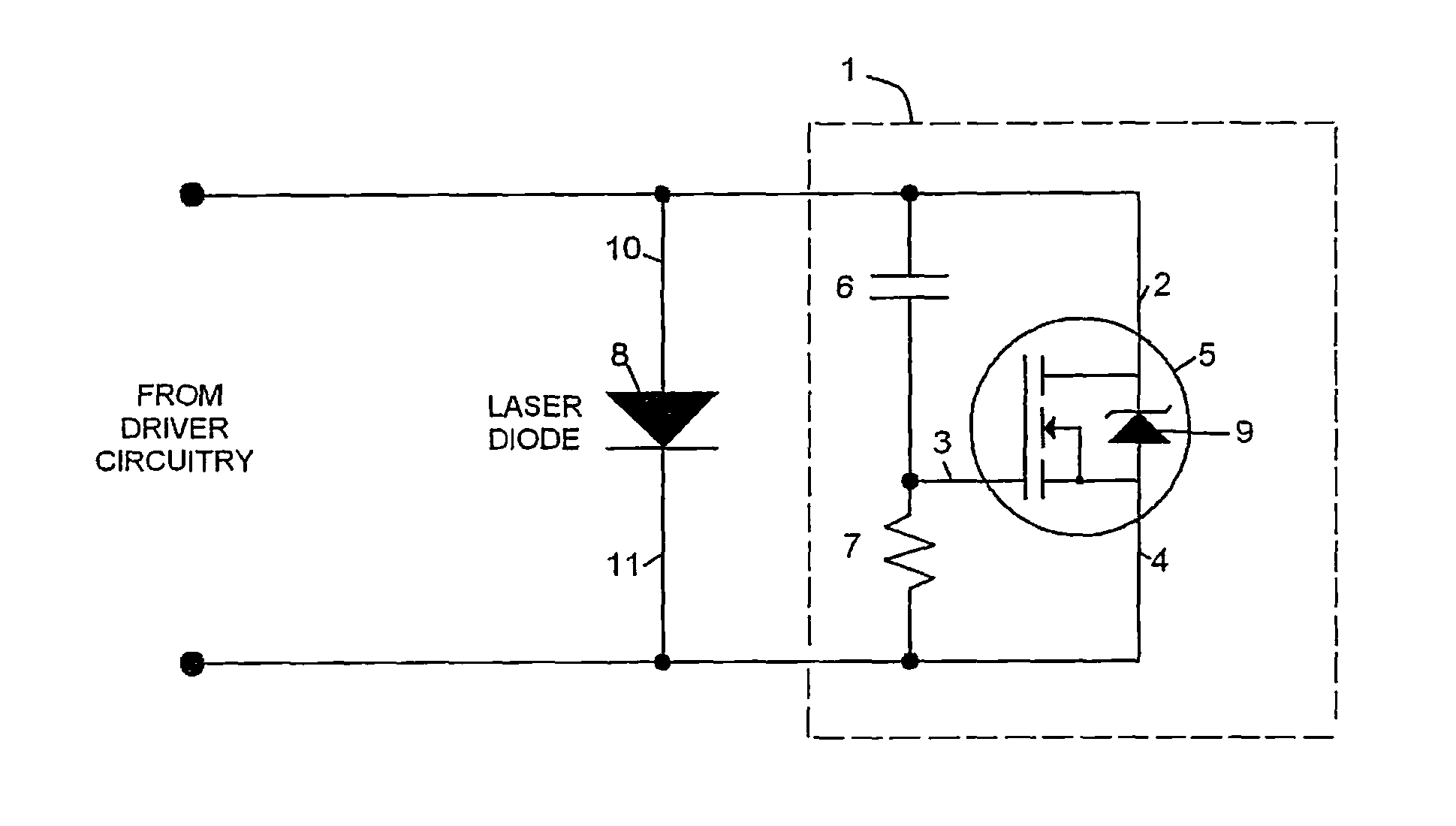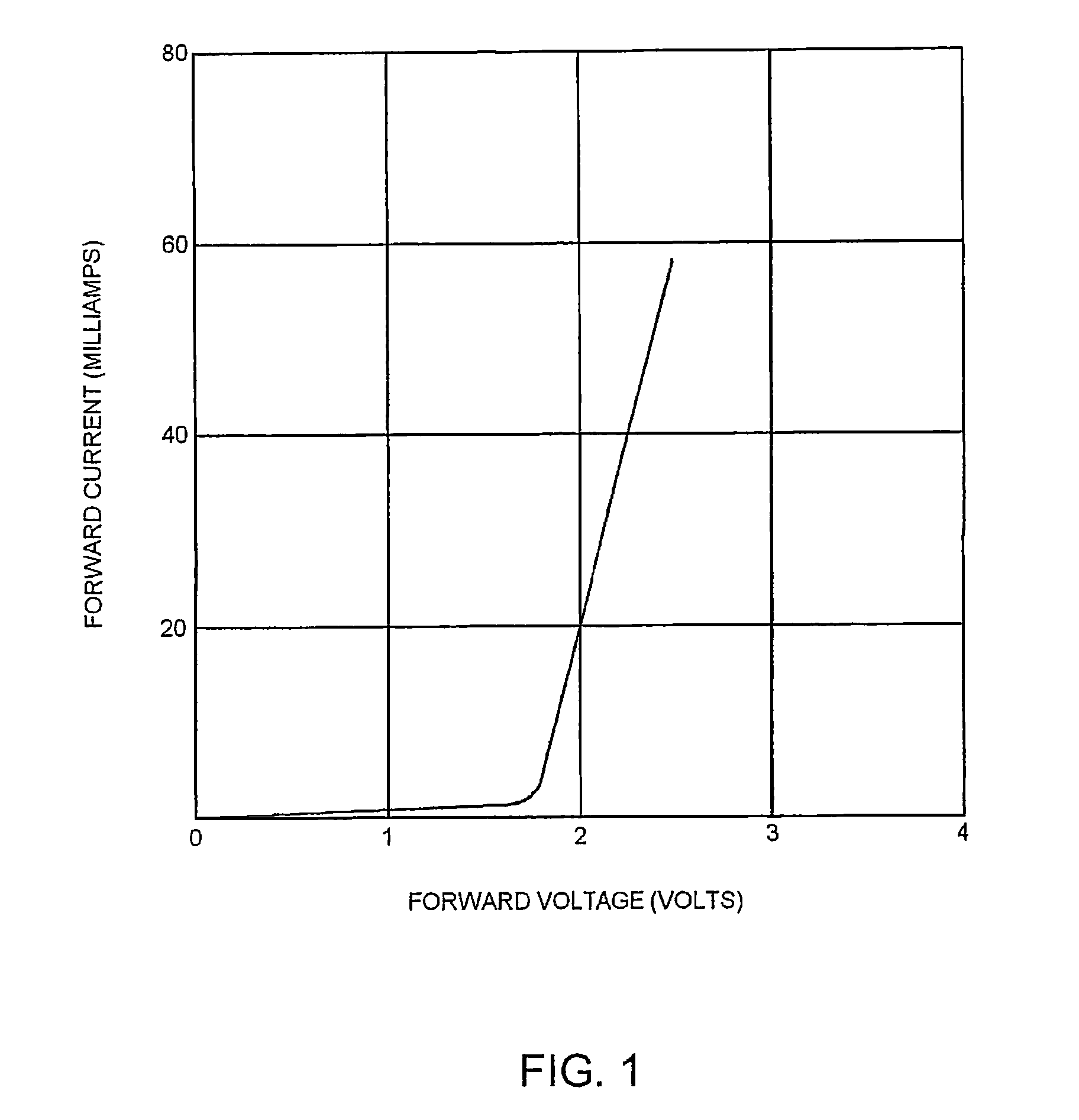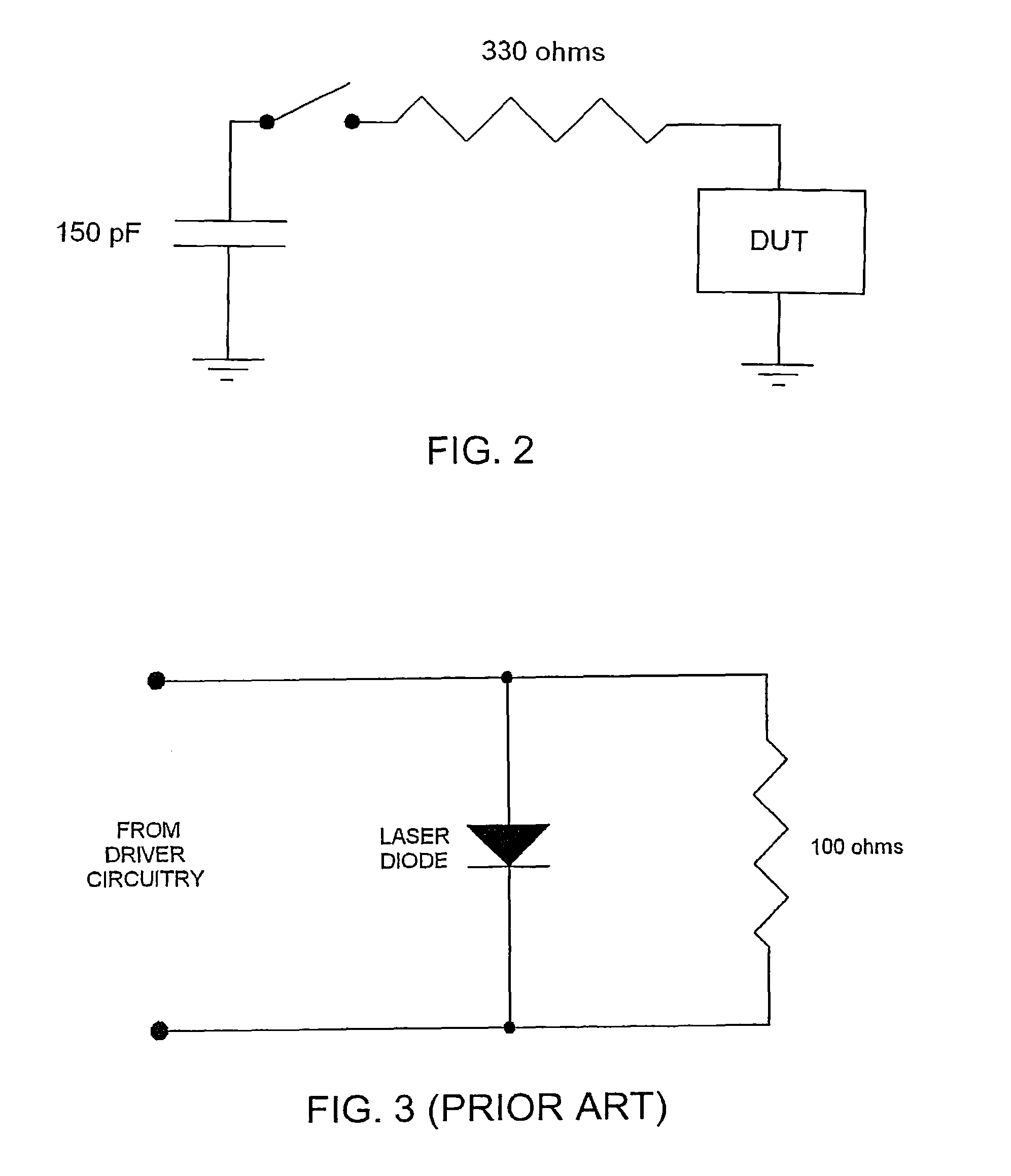Fault protector for opto-electronic devices and associated methods
a technology of opto-electronic devices and fault protectors, applied in the direction of circuit arrangements, emergency protective arrangements for limiting excess voltage/current, semiconductor lasers, etc., can solve the problems of opto-electronic device failure, product containing opto-electronic devices often seem to mysteriously fail, and most opto-electronic devices can be easily damaged, so as to avoid adding significant resistance or capacitance to the laser diode, and to avoid the effect of com
- Summary
- Abstract
- Description
- Claims
- Application Information
AI Technical Summary
Benefits of technology
Problems solved by technology
Method used
Image
Examples
Embodiment Construction
[0051]The present invention will now be described more fully hereinafter with reference to the accompanying drawings, in which preferred embodiments of the invention are shown. This invention may, however, be embodied in many different forms and should not be construed as limited to the embodiments set forth herein. Rather, these embodiments are provided so that this disclosure will be thorough and complete, and will fully convey the scope of the invention to those skilled in the art.
[0052]One embodiment of the invention, as illustrated with reference to FIG. 9, is described in the context of its use to protect a laser diode from ESD and other power-related faults. One of skill in the art will recognize that the device of the present invention can be used with other opto-electronic elements, and that this usage is not intended as a limitation. The device relies on a few passive components, and a class of enhancement-mode MOSFETs that have a very low gate-to-source threshold voltage ...
PUM
 Login to View More
Login to View More Abstract
Description
Claims
Application Information
 Login to View More
Login to View More - R&D
- Intellectual Property
- Life Sciences
- Materials
- Tech Scout
- Unparalleled Data Quality
- Higher Quality Content
- 60% Fewer Hallucinations
Browse by: Latest US Patents, China's latest patents, Technical Efficacy Thesaurus, Application Domain, Technology Topic, Popular Technical Reports.
© 2025 PatSnap. All rights reserved.Legal|Privacy policy|Modern Slavery Act Transparency Statement|Sitemap|About US| Contact US: help@patsnap.com



